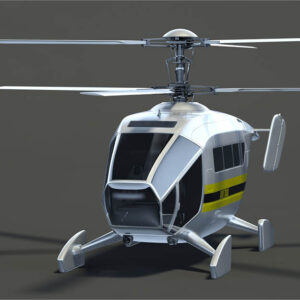
According to news provided by the Virginia Innovation Partnership Corporation via einnews.com:
Representatives from aviation and aerospace organizations in eight states have launched the “Advanced Air Mobility (AAM) Multistate Collaborative” to exchange views and methods to enable public infrastructure and services supporting the new generation of aircraft based on emerging technologies that are providing high levels of safety, efficiency, and environmental sustainability. The group recently held its inaugural meeting in Herndon, Virginia, and was organized by the Virginia Department of Aviation, the Virginia Innovation Partnership Corporation (VIPC) and JobsOhio, to discuss the state-level policies and infrastructure needed to support AAM operations across the country.
“The AAM Multistate Collaborative recognizes that AAM represents all modes of aviation, from Small Uncrewed Aircraft Systems (sUAS) to Electric Vertical Takeoff and Landing (eVTOL) vehicles and includes serving traditional aviation and airports. The collaborative will be a forum for states to share thoughts on aviation and aerospace, commerce and trade, economic development, technology, and other relevant perspectives and strategies for AAM,” said Greg Campbell, director of the Virginia Department of Aviation (DOAV). “While the Federal Aviation Administration (FAA) regulates AAM operations in the national airspace, state governments can support AAM by shaping the state and local laws and regulations, infrastructure and funding that complement the FAA policy and advance the AAM industry.”
The collaborative plans to identify and harmonize the governance and regulatory mechanisms that are within each state’s jurisdiction as a focal point to ensure continuity of operations. The group’s members will consider the needs of these new, flexible aviation services and how states can facilitate infrastructure development. They will also study the development of guidance for the aspects of AAM managed on the ground at the state and local level that allows state authorities to connect to and complement the FAA’s airspace jurisdiction with a consistent regulatory framework.
“States will assume a critical role in providing seamless AAM operations and spurring economic development, especially in communities that were previously unserved by legacy commercial aviation,” said Tim Sweeney, Director of Advanced Manufacturing, Aerospace and Aviation at JobsOhio. “Although manufacturers are continuing to develop and test their designs for FAA certification, it is necessary for states to begin preparing for AAM to support the industry when it is ready to fly.”
The group intends to build on the success of this Initial meeting by expanding its membership with representatives from additional states and serve as an information resource for states on the methodologies and technologies to develop a nationwide AAM ecosystem. They will also seek input from vehicle manufacturers and other industry participants to inform further analyses and establish goals to enable consistent and effective policy.
“We will engage with the FAA and industry to ensure that states create harmonized laws and regulations and shared infrastructure goals that complement established policies and standards and align with commercial needs,” said Tracy Tynan, the director of the Virginia Unmanned Systems Center at VIPC. “
Our goal is to support the growth of the industry and help with the safe evolution of AAM from the laboratory to the skies.” The founding members of the collaborative represent organizations responsible for the development of AAM in Alaska, Ohio, Oklahoma, Oregon, Pennsylvania, Texas, Utah, and Virginia, as well as the National Association of State Aviation Officials (NASAO). The next meeting of the collaborative is planned for Ohio in February 2024.
Soaring to new heights, together.
Be sure to visit the BWU Technology Partnerships Initiative website to learn more about how our NEOFIX program drives economic growth, promotes policy and infrastructure to improve drone safety and efficiency in various industries, and ensures that drone technology is being used responsibly.

